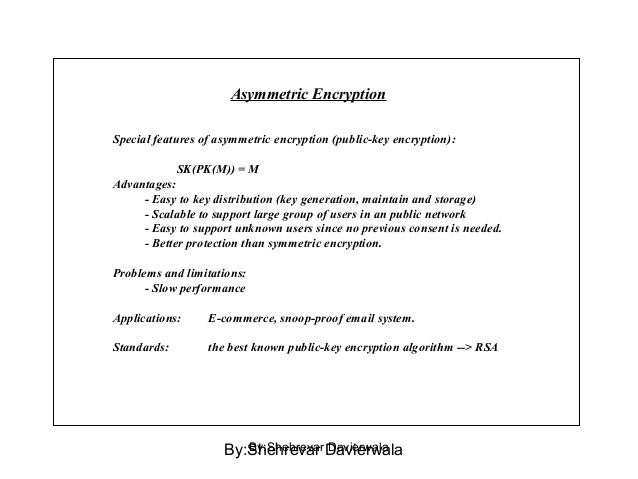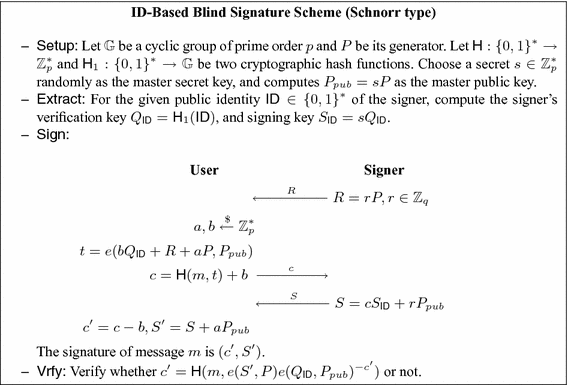- Asa Generating Secret Keys Unknown Encryption Algorithm Code
- Asa Generating Secret Keys Unknown Encryption Algorithm Free
- Asa Generating Secret Keys Unknown Encryption Algorithm In Word
- Asa Generating Secret Keys Unknown Encryption Algorithm Download
- Asa Generating Secret Keys Unknown Encryption Algorithm Free
This is the main reason why cryptographers, about 40 years ago, decided that key and algorithm should be split, with the key being secret and the algorithm being non-secret: you can quantify the secrecy of a key, not the secrecy of an algorithm. This gives us an insight into your specific question. Sep 25, 2018 A Diffie-Hellman group to determine the strength of the encryption-key-determination algorithm. The ASA uses this algorithm to derive the encryption and hash keys. For IKEv2, a separate pseudo-random function (PRF) used as the algorithm to derive keying material and hashing operations required for the IKEv2 tunnel encryption and so on.
Key generation is the process of generating keys for cryptography. The key is used to encrypt and decrypt data whatever the data is being encrypted or decrypted.
Modern cryptographic systems include symmetric-key algorithms (such as DES and AES) and public-key algorithms (such as RSA). Symmetric-key algorithms use a single shared key; keeping data secret requires keeping this key secret. Public-key algorithms use a public key and a private key. The public key is made available to anyone (often by means of a digital certificate). A sender will encrypt data with the public key; only the holder of the private key can decrypt this data.
Since public-key algorithms tend to be much slower than symmetric-key algorithms, modern systems such as TLS and its predecessor SSL as well as the SSH use a combination of the two in which:
- One party receives the other's public key, and encrypts a small piece of data (either a symmetric key or some data that will be used to generate it).
- The remainder of the conversation (the remaining party) uses a (typically faster) symmetric-key algorithm for encryption.
The simplest method to read encrypted data is a brute force attack–simply attempting every number, up to the maximum length of the key. Therefore, it is important to use a sufficiently long key length; longer keys take exponentially longer time to attack, making a brute force attack invisible and impractical.
Currently, commonly used key lengths are:
- 128-bits for symmetric key algorithms.
- 1024-bits for public-key algorithms.
Key generation algorithms[changechange source]
In computer cryptography keys are integers. In some cases keys are randomly generated using a random number generator (RNG) or pseudorandom number generator (PRNG), the latter being a computeralgorithm that produces data which appears random under analysis. Some types the PRNGs algorithms utilize system entropy to generate a seed data, such seeds produce better results, since this makes the initial conditions of the PRNG much more difficult for an attacker to guess.
In other situations, the key is created using a passphrase and a key generation algorithm, using a cryptographic hash function such as SHA-1.
Related pages[changechange source]
- Distributed key generation: For some protocols no party should be in the sole possession of the secret key. Rather, during distributed key generation every party obtains a share of the key. A threshold of the participating parties need to work together in order to achieve a cryptographic task, such as decrypting a message.
References[changechange source]
/easeus-data-recovery-wizard-129-key-generator.html.
Asa Generating Secret Keys Unknown Encryption Algorithm Code
In cryptography, a key is a piece of information (a parameter) that determines the functional output of a cryptographic algorithm. For encryption algorithms, a key specifies the transformation of plaintext into ciphertext, and vice versa for decryption algorithms. Keys also specify transformations in other cryptographic algorithms, such as digital signature schemes and message authentication codes.[1]
Need for secrecy[edit]
In designing security systems, it is wise to assume that the details of the cryptographic algorithm are already available to the attacker. This is known as Kerckhoffs' principle — 'only secrecy of the key provides security', or, reformulated as Shannon's maxim, 'the enemy knows the system'. The history of cryptography provides evidence that it can be difficult to keep the details of a widely used algorithm secret (see security through obscurity). A key is often easier to protect (it's typically a small piece of information) than an encryption algorithm, and easier to change if compromised. Thus, the security of an encryption system in most cases relies on some key being kept secret.[2]
Trying to keep keys secret is one of the most difficult problems in practical cryptography; see key management. An attacker who obtains the key (by, for example, theft, extortion, dumpster diving, assault, torture, or social engineering) can recover the original message from the encrypted data, and issue signatures.
Key scope[edit]
Keys are generated to be used with a given suite of algorithms, called a cryptosystem. Encryption algorithms which use the same key for both encryption and decryption are known as symmetric key algorithms. A newer class of 'public key' cryptographic algorithms was invented in the 1970s. These asymmetric key algorithms use a pair of keys—or keypair—a public key and a private one. Public keys are used for encryption or signature verification; private ones decrypt and sign. The design is such that finding out the private key is extremely difficult, even if the corresponding public key is known. As that design involves lengthy computations, a keypair is often used to exchange an on-the-fly symmetric key, which will only be used for the current session. RSA and DSA are two popular public-key cryptosystems; DSA keys can only be used for signing and verifying, not for encryption.
Ownership and revocation[edit]
Part of the security brought about by cryptography concerns confidence about who signed a given document, or who replies at the other side of a connection. Assuming that keys are not compromised, that question consists of determining the owner of the relevant public key. To be able to tell a key's owner, public keys are often enriched with attributes such as names, addresses, and similar identifiers. The packed collection of a public key and its attributes can be digitally signed by one or more supporters. In the PKI model, the resulting object is called a certificate and is signed by a certificate authority (CA). In the PGP model, it is still called a 'key', and is signed by various people who personally verified that the attributes match the subject.[3]
In both PKI and PGP models, compromised keys can be revoked. Revocation has the side effect of disrupting the relationship between a key's attributes and the subject, which may still be valid. In order to have a possibility to recover from such disruption, signers often use different keys for everyday tasks: Signing with an intermediate certificate (for PKI) or a subkey (for PGP) facilitates keeping the principal private key in an offline safe.

Deleting a key on purpose to make the data inaccessible is called crypto-shredding.
Key sizes[edit]
Asa Generating Secret Keys Unknown Encryption Algorithm Free
For the one-time pad system the key must be at least as long as the message. In encryption systems that use a cipher algorithm, messages can be much longer than the key. The key must, however, be long enough so that an attacker cannot try all possible combinations.
A key length of 80 bits is generally considered the minimum for strong security with symmetric encryption algorithms. 128-bit keys are commonly used and considered very strong. See the key size article for a more complete discussion.
The keys used in public key cryptography have some mathematical structure. For example, public keys used in the RSA system are the product of two prime numbers. Thus public key systems require longer key lengths than symmetric systems for an equivalent level of security. 3072 bits is the suggested key length for systems based on factoring and integer discrete logarithms which aim to have security equivalent to a 128 bit symmetric cipher. Elliptic curve cryptography may allow smaller-size keys for equivalent security, but these algorithms have only been known for a relatively short time and current estimates of the difficulty of searching for their keys may not survive. As early as 2004, a message encrypted using a 109-bit key elliptic curve algorithm had been broken by brute force.[4] The current rule of thumb is to use an ECC key twice as long as the symmetric key security level desired. Except for the random one-time pad, the security of these systems has not been proven mathematically as of 2018, so a theoretical breakthrough could make everything one has encrypted an open book (see P versus NP problem). This is another reason to err on the side of choosing longer keys.
Key choice[edit]

To prevent a key from being guessed, keys need to be generated truly randomly and contain sufficient entropy. The problem of how to safely generate truly random keys is difficult, and has been addressed in many ways by various cryptographic systems. There is a RFC on generating randomness (RFC 4086, Randomness Requirements for Security). Some operating systems include tools for 'collecting' entropy from the timing of unpredictable operations such as disk drive head movements. For the production of small amounts of keying material, ordinary dice provide a good source of high quality randomness.
Key vs password[edit]
For most computer security purposes and for most users, 'key' is not synonymous with 'password' (or 'passphrase'), although a password can in fact be used as a key. The primary practical difference between keys and passwords is that the latter are intended to be generated, read, remembered, and reproduced by a human user (though the user may delegate those tasks to password management software). A key, by contrast, is intended for use by the software that is implementing the cryptographic algorithm, and so human readability etc. is not required. In fact, most users will, in most cases, be unaware of even the existence of the keys being used on their behalf by the security components of their everyday software applications.
Asa Generating Secret Keys Unknown Encryption Algorithm In Word
If a passwordis used as an encryption key, then in a well-designed crypto system it would not be used as such on its own. This is because passwords tend to be human-readable and, hence, may not be particularly strong. To compensate, a good crypto system will use the password-acting-as-key not to perform the primary encryption task itself, but rather to act as an input to a key derivation function (KDF). That KDF uses the password as a starting point from which it will then generate the actual secure encryption key itself. Various methods such as adding a salt and key stretching may be used in the generation.
See also[edit]
- Cryptographic key types classification according to their usage
- Diceware describes a method of generating fairly easy-to-remember, yet fairly secure, passphrases, using only dice and a pencil.
- glossary of concepts related to keys
Asa Generating Secret Keys Unknown Encryption Algorithm Download
References[edit]
- ^'What is cryptography? - Definition from WhatIs.com'. SearchSecurity. Retrieved 2019-07-20.
- ^'Quantum Key Generation from ID Quantique'. ID Quantique. Retrieved 2019-07-20.
- ^Matthew Copeland; Joergen Grahn; David A. Wheeler (1999). Mike Ashley (ed.). 'The GNU Privacy Handbook'. GnuPG. Archived from the original on 12 April 2015. Retrieved 14 December 2013.
- ^Bidgoli, Hossein (2004). The Internet Encyclopedia. John Wiley. p. 567. ISBN0-471-22201-1 – via Google Books.